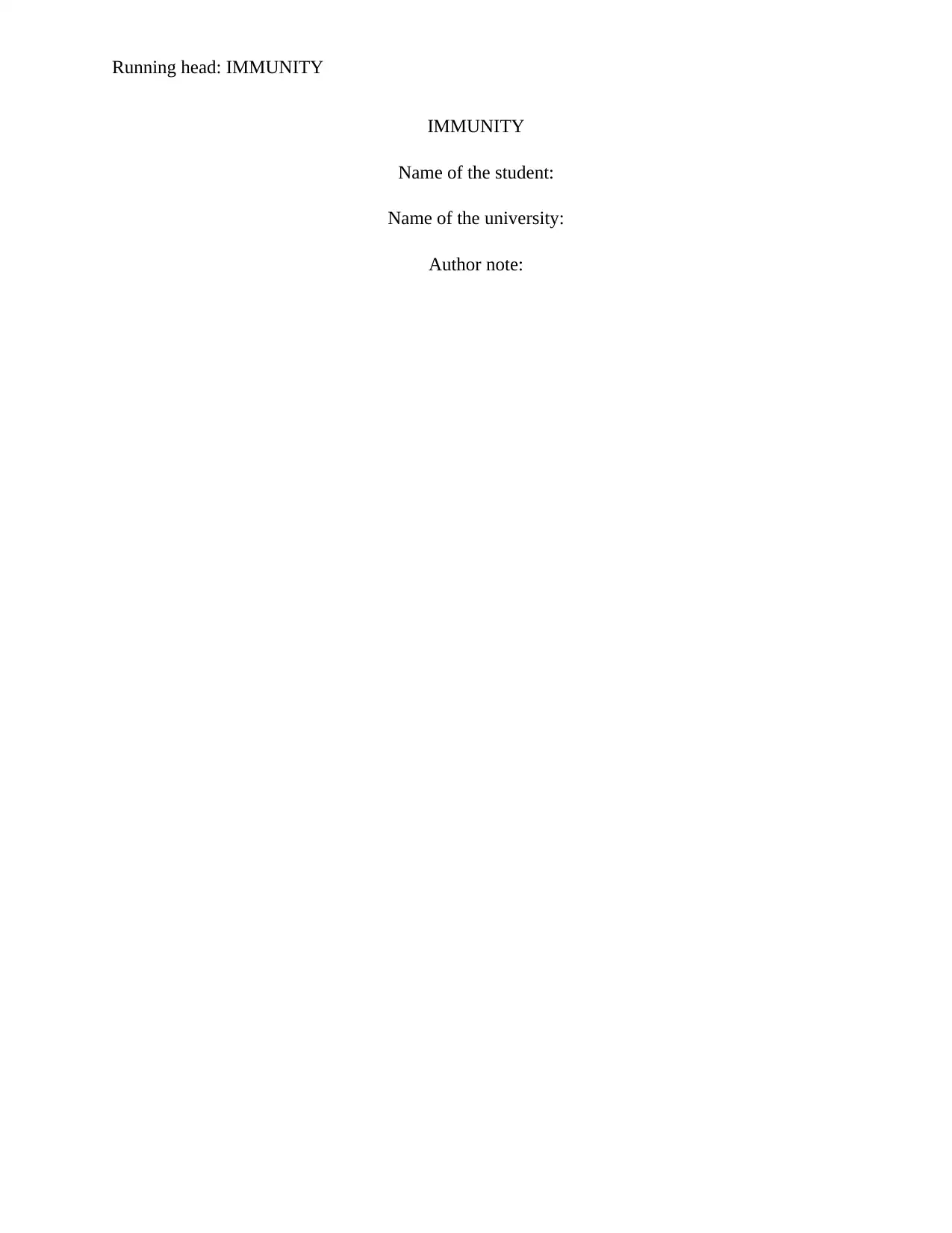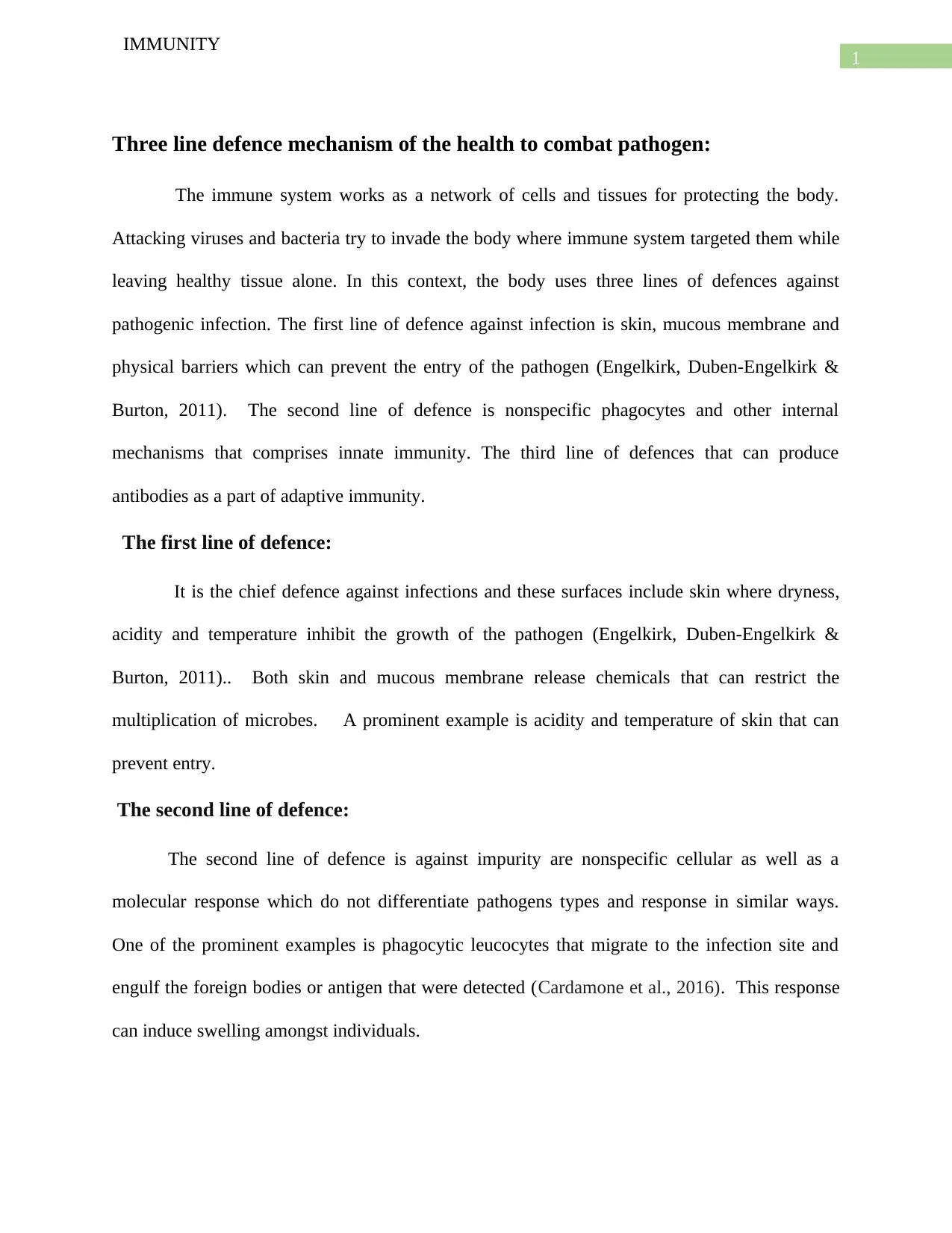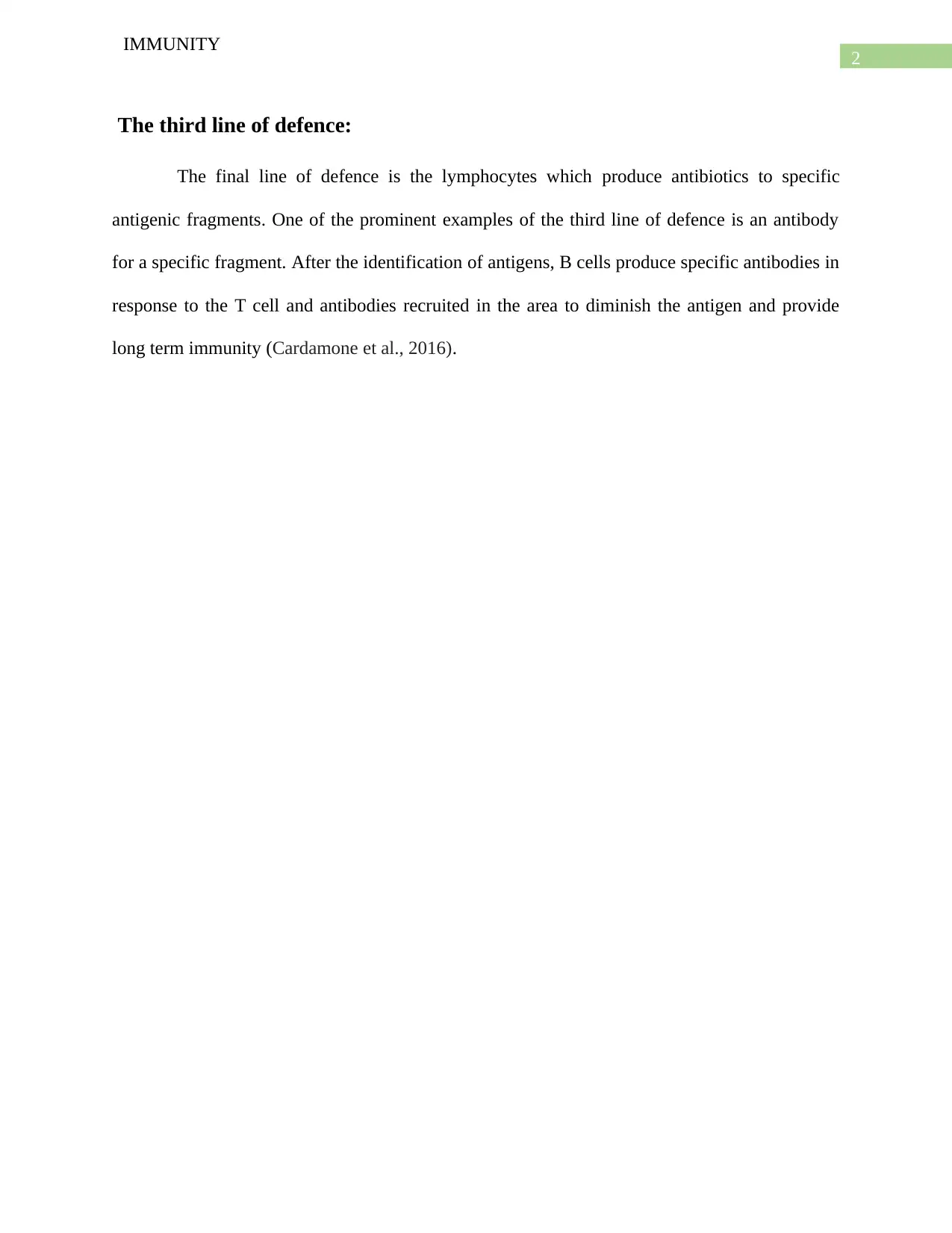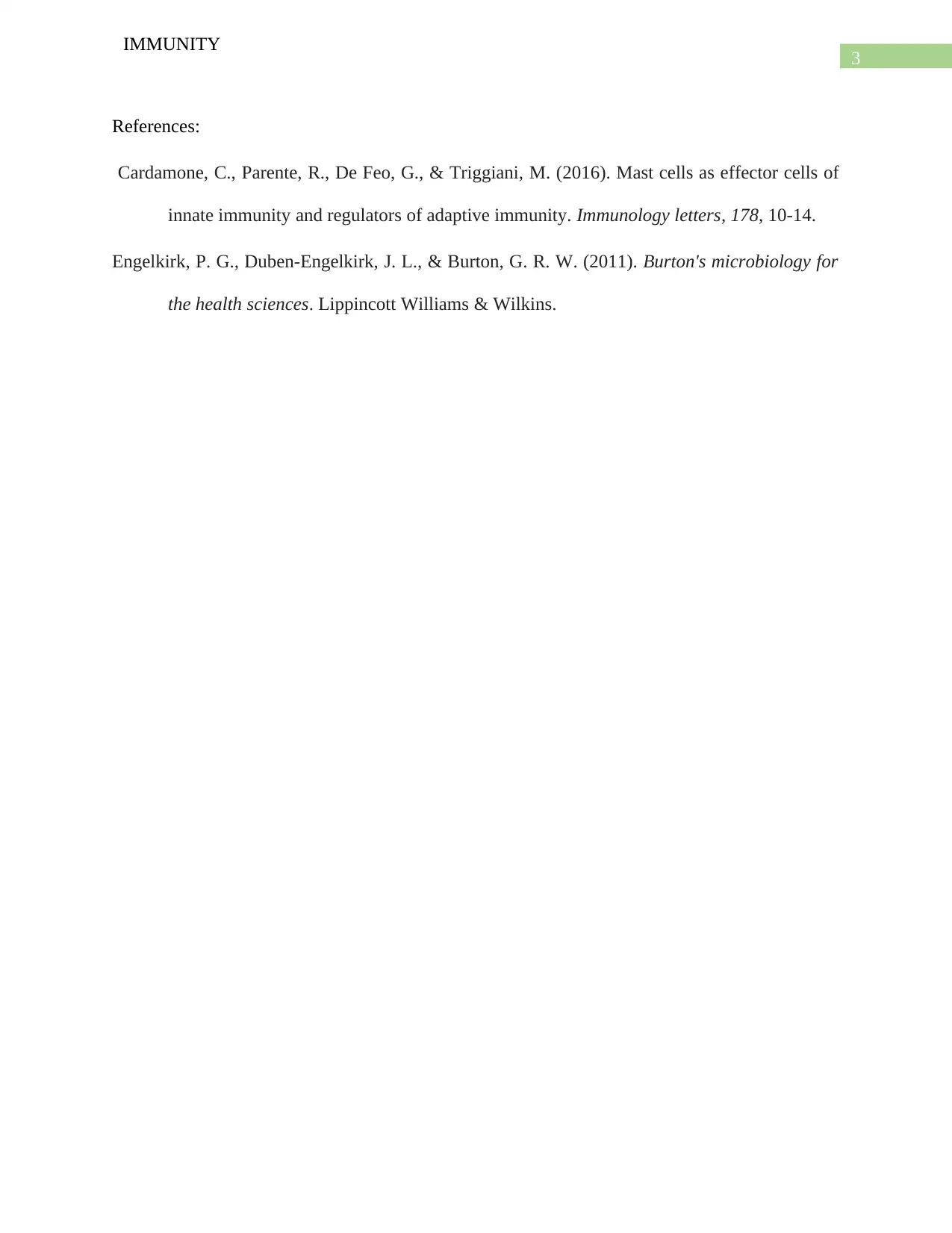Immune System: A Report on Three Lines of Defense Mechanisms
VerifiedAdded on 2022/08/21
|4
|452
|70
Report
AI Summary
This report examines the human immune system's three primary lines of defense against pathogens. The first line, including skin and mucous membranes, acts as a physical barrier. The second line involves nonspecific cellular responses, such as phagocytes, which engulf foreign bodies. The third line of defense, the adaptive immune response, involves lymphocytes that produce antibodies specific to antigenic fragments, providing long-term immunity. References from Engelkirk, Duben-Engelkirk & Burton (2011) and Cardamone et al. (2016) support the discussion of these mechanisms, detailing how the immune system combats infections and maintains bodily health.
1 out of 4











![[object Object]](/_next/static/media/star-bottom.7253800d.svg)